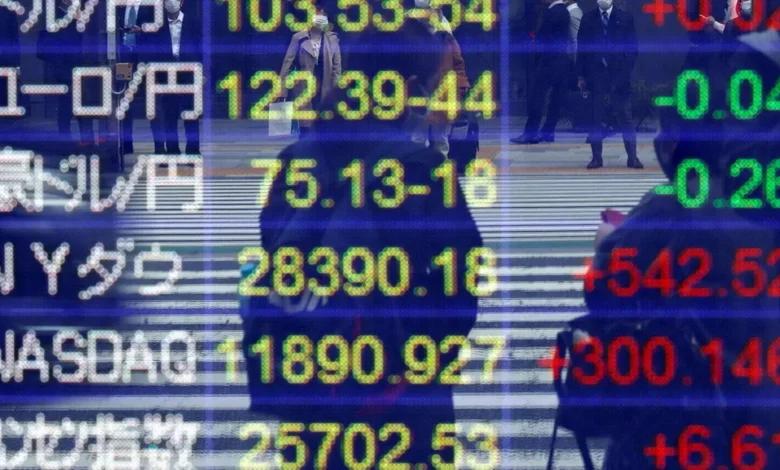World’s biggest bond markets hit by relentless selling

An unrelenting selloff in world government bonds drove US 30-year Treasury yields to 5 percent for the first time since 2007 and German 10-year yields to 3 percent on Wednesday in moves that could hasten a global slowdown, hurting stocks and corporate bonds.
A growing sense that interest rates in major economies will stay higher for longer to contain inflation, ever resilient US economic data and a sharp unwinding of traders’ positions for a bond rally have hit home.
In the US Treasury market, considered the bedrock of the global financial system, 10-year yields have jumped 20 basis points (bps) to 4.8 percent this week alone. They are up almost 100 bps this year, having jumped over 200 bps in 2022.
Bond yields move inversely to prices, and asset managers who had held bonds expecting prices to rally are now throwing in the towel.
“Right now, there is huge momentum behind the sell off (in Treasuries) because the positioning in the market has been wrong,” said Juan Valenzuela, fixed income portfolio manager at asset manager Artemis.
“A lot of people bought into the idea that because the Federal Reserve was reaching the peak of rate hikes, it was time to buy government bonds.”
Thirty-year US yields on Wednesday touched the 5 percent psychological level for the first time since the global financial crisis, and, as the rout spread, Germany’s 10-year Bund yield hit 3 percent, a fresh milestone in a market where yields were negative in early 2022.
Australian and Canadian 10-year bond yields have surged over 20 bps each this week, and British 30-year government bond yields hit a fresh 25-year high above 5 percent on Wednesday.
In a further sign of investor nervousness, the closely watched MOVE bond volatility index is at a four-month high.
RIPPLES
Government borrowing costs influence everything from mortgage rates for homeowners to loan rates for companies.
The speed of the bond rout sparked alarm across equity markets and drove the safe-haven dollar to its highest in months against the euro, pound, and embattled Japanese yen.
World stocks hit their lowest since April on Wednesday, and the cost of insuring exposure to a basket of European corporate junk bonds hit a five-month high, according to data from S&P Global Market Intelligence.
“We are very cautious on risky assets at this juncture,” said Vikram Aggarwal, sovereign bond fund manager at Jupiter.
He said, on the one hand, riskier assets like equities and corporate credit were vulnerable to an eventual recession caused by central bank rate hikes.
Or, if recessions do not happen and “we get a higher for longer scenario where (interest) rates stay where they are… that’s ultimately pretty negative for risky assets too.”
A fresh surge in borrowing costs is also a headache for central banks, as they weigh up the need to keep rates high to contain inflation against a deteriorating economic outlook.
However, uncertainty about when and in what form that deterioration occurs is driving further complications in bond markets and contributing to the sharper sell off in longer dated bonds.
The 10-year US term premium, a closely watched measure of the compensation investors demand to lend money for the longer term, has turned positive for the first time since June 2021 and risen over 70 basis points since the end of August, according to the New York Fed.
“Everybody’s been calling for a recession that just simply refuses to arrive. And then you’ve got the march higher in oil prices, which of course is complicating the picture in terms of the outlook for policy rates,” said Rabobank head of rates strategy Richard McGuire.
“All of that, I think is conspiring to see investors very wary of locking up their money in longer dated government bonds. They’re demanding compensation for that.











